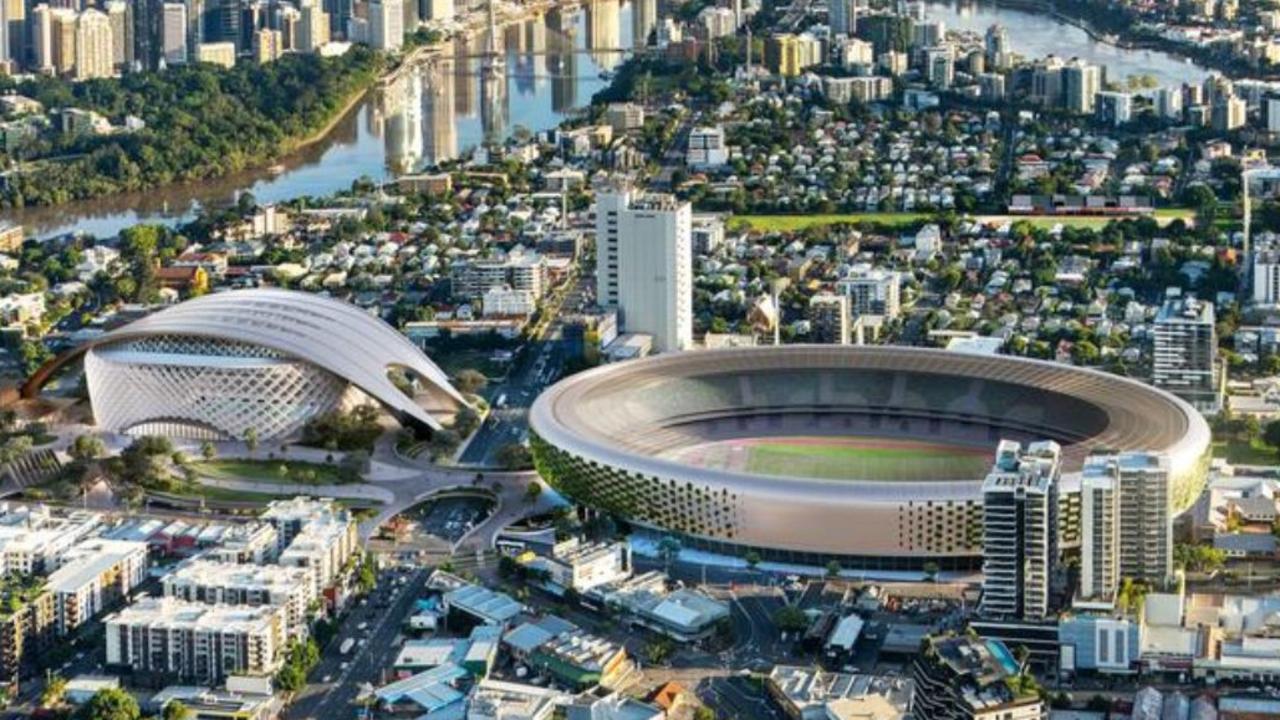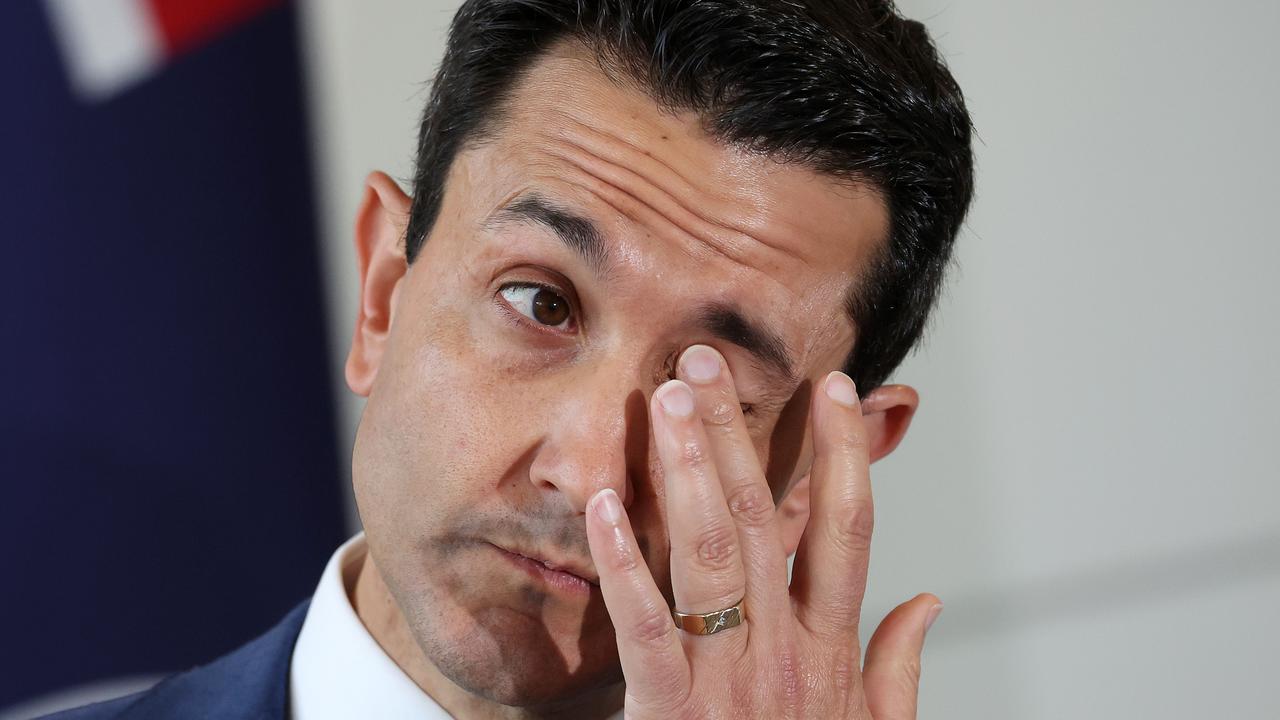Qld budget 2023: Your 5-minute guide
Get a quick snapshot of today’s budget reveal, as we bring you all the important bits you need to know.

QLD Politics
Don't miss out on the headlines from QLD Politics. Followed categories will be added to My News.
Here’s your bite-size breakdown of Queensland’s 2023-24 state budget.
Economy:
Rivers of coal gold have led to the Palaszczuk government delivering what it touts as the biggest budget surplus delivered by any state government anywhere in the nation — at $12.3bn-- in the 2022/23 financial year.
But the government will go directly back into a $2.2bn deficit in 2023/24, projecting thin surpluses between $105m and $377m in the years after.
Net debt was set to be $19.7bn this financial year, but has been brought down to $5.8bn.
The figure will increase substantially in future years — though lower than initially expected-- climbing to $47bn in 2026/27.
Queensland’s total debt— which includes the debt carried by government owned corporations-- will climb to $147bn over the forward estimates.
Coal royalties raked in a phenomenal $15.3bn for the state in the 2022/23 financial year, $10.5bn of it from the new tier — far higher than the $5.4bn in total coal royalties expected, with $765m meant to come from the change.

Cost of living:
The centrepiece of the state budget is immediate and temporary cost of living relief delivered through a $1.5bn electricity rebate package which builds on power bill relief announced by the federal government.
Queensland’s 2.2m households will receive at least $550 off their power bills in the 2023/24 financial year.
Eligible vulnerable Queenslanders including pensioners — already in line for a $500 rebate — will receive a double-prong top up worth a combined $522 to bring their total bill help to $1072.
There is also $645m across four years to make kindy free for all Queensland children.
Infrastructure:
The government has boasted a recording breaking infrastructure spend of $89 billion.
Labelled the “largest capital works program in Queensland history,” the Big Build program will see a series of investment in large infrastructure projects, including major energy infrastructure over four years.
Brisbane 2032 projects will also be funded under the program, with another $100 million added to the $7.5 billion estimated investment.
Under the program housing will also see $751 million, with another $6.9 billion to go towards transport structure.

Housing:
An additional $1.1 billion was added to social housing to supply 3,265 homes by 2025 under the Housing and Homelessness Action Plan, while the $2 billion Housing Investment Fund will now deliver 5,600 news social homes by 2027.
A further $250.8 million will be spend on homeless support services.
Health:
Ambulance ramping was a major focus of the health budget this year, with $148.9 million spent to reduce ramping.
Another $48.3 million will be spent on building six new ambulance stations, while $28.3 million will buy 144 new ambulances and another $72.m3 million will be used to employ another 200 paramedics.
To further reduce ramping, $13.3 million will be used to add more mental health professionals to hospital emergency departments and to assist police on mental health call-outs.
The Treasures highlighted the seven satellite hospitals expected to open next year in Redlands, Caboolture, Kallangur, Tugun, Ripley, Bribie Island and Eight Mile Plains, as well as LifeFlight’s $586.1 million cash injection.
In an effort to boost the states health workforce, $3 million worth of incentives have been release, including $70,000 to General Practitioners and $20,000 to health care workers who chose to relocate to Queensland.
The government has increased its health spent by $9.6 per cent health spend increase.

Youth crime:
Funding into youth crime preventive measures have been ramped up with $446.4 million to be spent on programs and services over the next five years.
Each year, $37 million will be spent targeting “serious, repeat offenders,” while another $89.7 million will be used to address youth detention centre capacity issues.
A further $132 million will be used to support victims and increase police patrols, including $30 million which will be dedicated to helping seniors secure their homes.
Women and family violence:
$16.3 million has been spent on helping Queensland women achieve economic security, and bolster a mother’s ability to enter or reenter the workforce after having children.
Maternity birthing services received a $63 million funding boost and $42 for breast screening services.
Another $225 million will be spent over five years or $32.7 million per year for the Women’s Safety Justice Taskforce including $20.7 million per year for domestic, family and sexual violence and $44 million for domestic violence shelters and support services.
$18 million will also be spent on child connect services.
Regions:
Regional areas have received a swath of major infrastructure upgrades, with 65.5 per cent of the Big Build capital program being reinvestment of coal royalty surplus
Major projects have now been given the green light including the 1,1000 Copper String transmissions line project between Townsville and Mt Isa, the Fitzroy to Gladstone Pipeline and the Burdekin Falls Dam upgrade.
The government will also invest $7 billion in pump hydro projects as it continues to move away from coal reliance.

Education:
$645 million will be spent over four years to provide 15 hours of free kindergarten to all children aged 4, saving families an estimated $4,600 in annual fees.
The government is also focusing on school expansion, investing $968 million in land purchase to build future schools on.’
There is also $2.7m to expand the school breakfast program in Queensland’s most disadvantaged areas.
$674,000 has been put towards housing for teachers in regional and remote areas.
Indigenous:
$167 million added to the Our Way initiative to help reduce the rate of over-representation of First Nations children in the child protection system.
$38.6 million dedicated to Managing Country with First Nations peoples.
Sport and Tourism:
$20 million to support tourism experience development in “priority areas‘ with a priority focus on First Nations, sustainability, accessibility and ec-nature.$8 million for Scouts and Girls Scouts over two years


